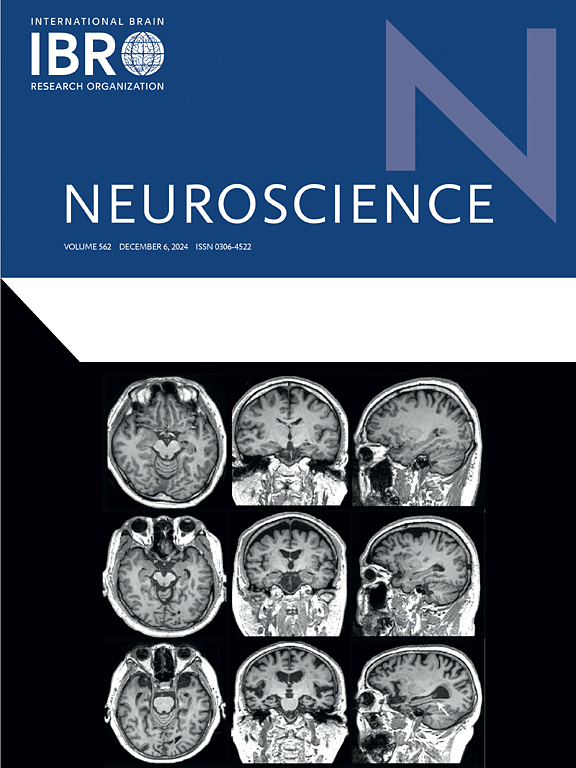ATF3介导高盐饮食诱导的缺血性卒中加重:脑波爆发刺激的治疗潜力
IF 2.8
3区 医学
Q2 NEUROSCIENCES
引用次数: 0
摘要
急性缺血性卒中(AIS)是一种与显著发病率和致残相关的高风险疾病,高盐饮食(HSD)可能进一步加剧。虽然间歇性脑波爆发刺激(iTBS)是临床上有效的康复方式,但其神经保护机制尚不清楚。本研究旨在阐明HSD加重早期AIS损伤的途径,识别潜在的生物标志物,并评估iTBS干预的影响。首先,采用生物信息学技术鉴定大脑中动脉闭塞(MCAO)小鼠伴或不伴HSD的早期缺血相关核心基因和差异表达的小胶质基因(demg)。随后,这些demg中富集的关键通路被阐明。接下来,选择与hsd加重AIS机制相关的共表达基因作为潜在的生物标志物,并在体内和体外进行验证。最后,评估iTBS对生物标志物表达的影响。因此,综合生物信息学分析表明,ATF3是hsd加重AIS损伤的潜在生物标志物,与hsd诱导的小胶质细胞凋亡有机制联系。在体内和体外AIS模型中,HSD均显著上调ATF3的表达。此外,iTBS干预显著下调了hsd加重AIS背景下的ATF3表达。重要的是,iTBS还特异性下调了hsd喂养的MCAO小鼠海马小胶质细胞中ATF3的表达。总之,这些发现表明,ATF3可以作为HSD和AIS联合损伤的潜在生物标志物,代表了iTBS的一个有希望的治疗靶点。本文章由计算机程序翻译,如有差异,请以英文原文为准。

ATF3 mediates high-salt diet-induced exacerbation of ischemic stroke: therapeutic potential of theta-burst stimulation
Acute ischemic stroke (AIS), a high-risk condition associated with significant morbidity and disability, could be further exacerbated by a high-salt diet (HSD). Although intermittent theta-burst stimulation (iTBS) is a clinically effective rehabilitation modality, its neuroprotective mechanisms remain unclear. This study aimed to elucidate the pathways through which HSD exacerbates early AIS injury, identify potential biomarkers, and assess the impact of iTBS intervention. First, bioinformatics techniques were employed to identify core genes associated with early ischemia and differentially expressed microglial genes (DEMGs) in mice subjected to middle cerebral artery occlusion (MCAO) with or without HSD. Subsequently, key pathways enriched among these DEMGs were elucidated. Next, co-expressed genes linked to HSD-exacerbated AIS mechanisms were selected as potential biomarkers and validated in vivo and in vitro. Finally, iTBS effects on biomarker expression were evaluated. As a result, integrative bioinformatics analysis implicated ATF3 as a potential biomarker for HSD-exacerbated AIS injury, mechanistically linked to HSD-induced microglial apoptosis. Consistently, HSD significantly upregulated ATF3 expression in both in vivo and in vitro AIS models. Furthermore, iTBS intervention significantly downregulated ATF3 expression within the HSD-exacerbated AIS context. Critically, iTBS also specifically downregulated ATF3 expression notably within hippocampal microglia of HSD-fed MCAO mice. Collectively, these findings suggest ATF3 serves as a potential biomarker for the combined injury induced by HSD and AIS and represents a promising therapeutic target for iTBS.
求助全文
通过发布文献求助,成功后即可免费获取论文全文。
去求助
来源期刊

Neuroscience
医学-神经科学
CiteScore
6.20
自引率
0.00%
发文量
394
审稿时长
52 days
期刊介绍:
Neuroscience publishes papers describing the results of original research on any aspect of the scientific study of the nervous system. Any paper, however short, will be considered for publication provided that it reports significant, new and carefully confirmed findings with full experimental details.
 求助内容:
求助内容: 应助结果提醒方式:
应助结果提醒方式:


